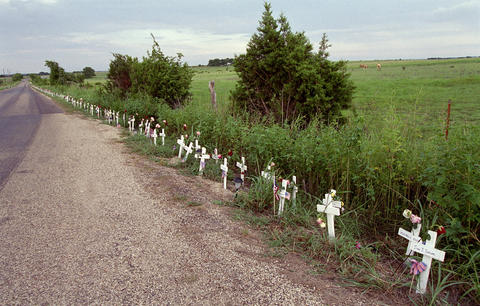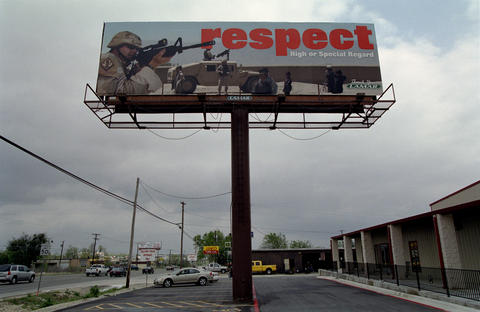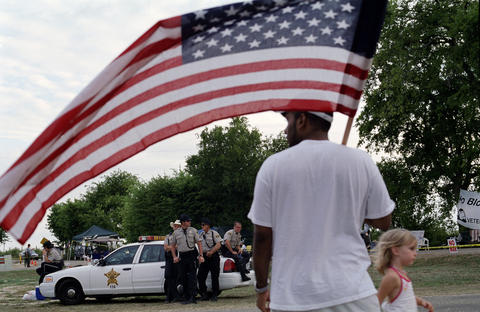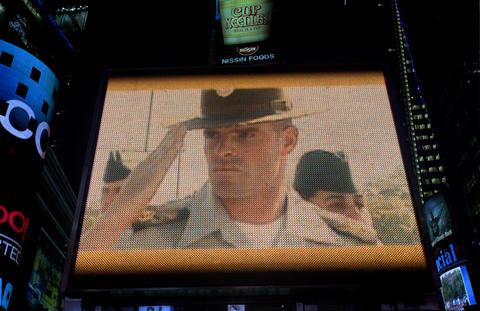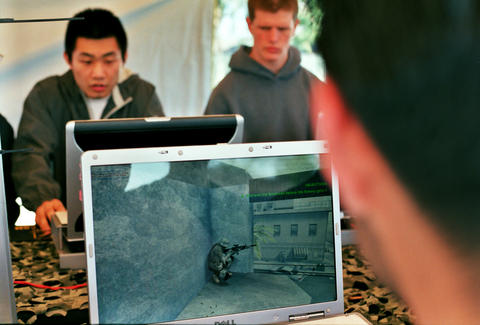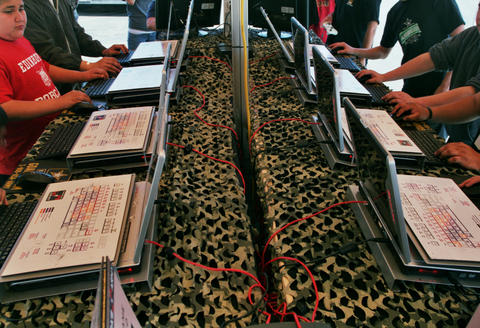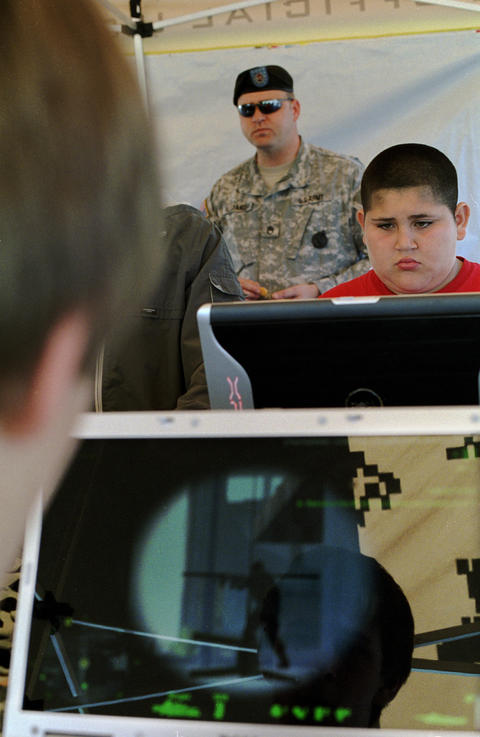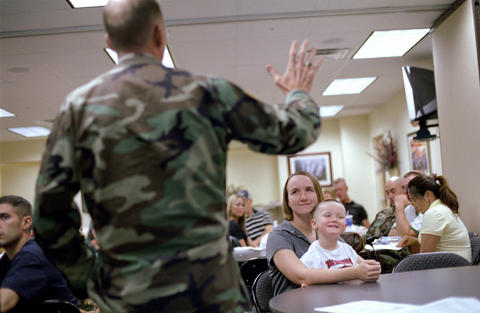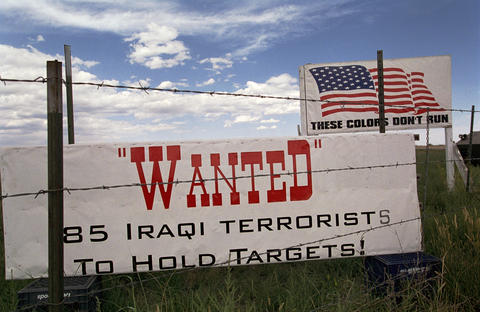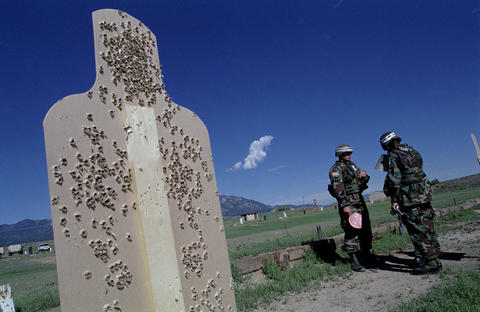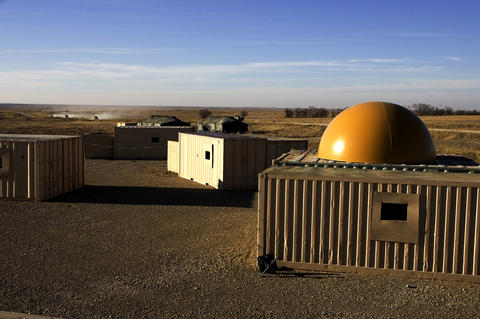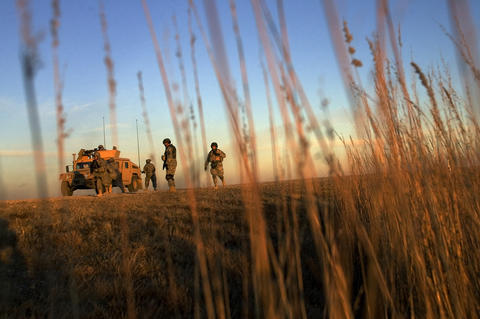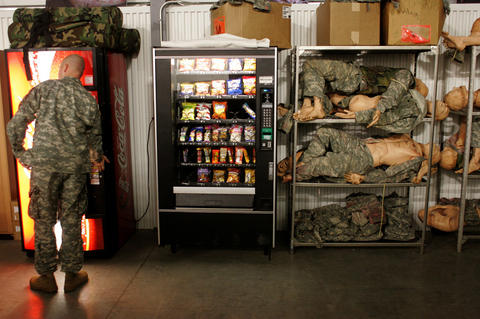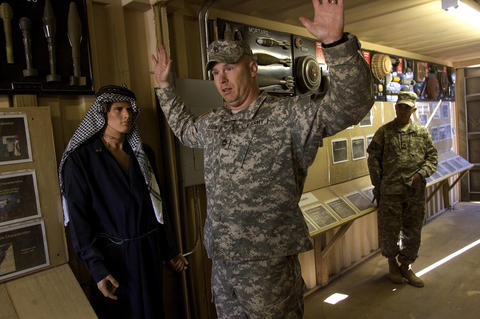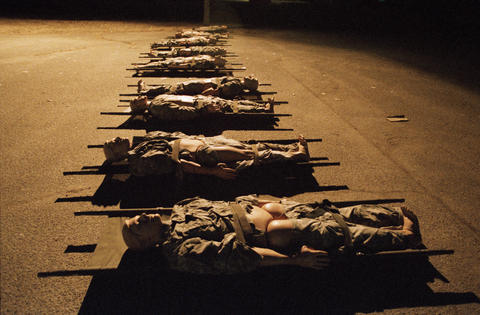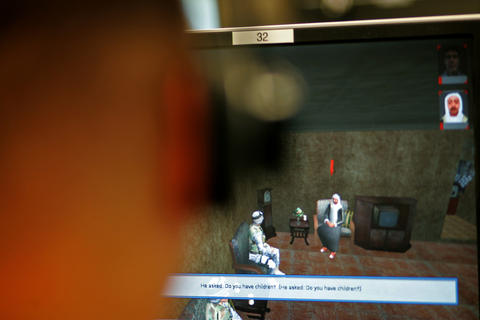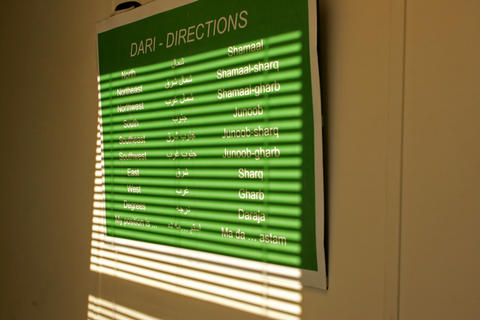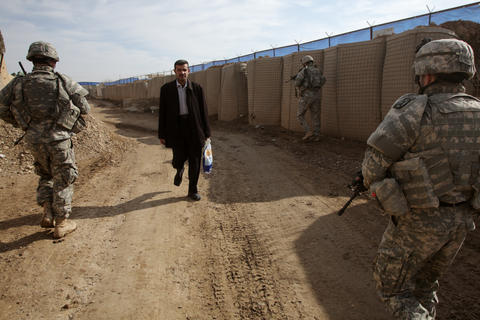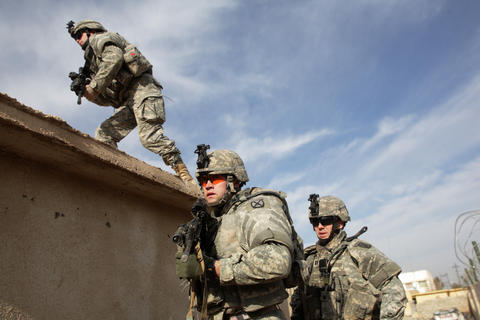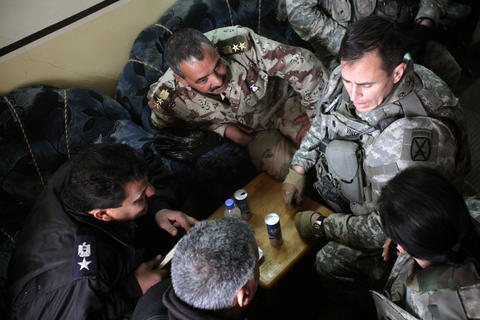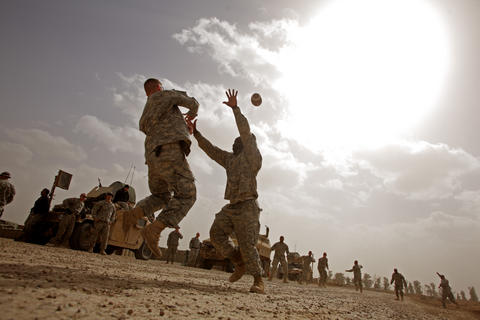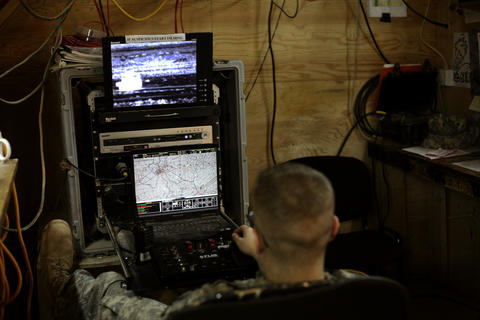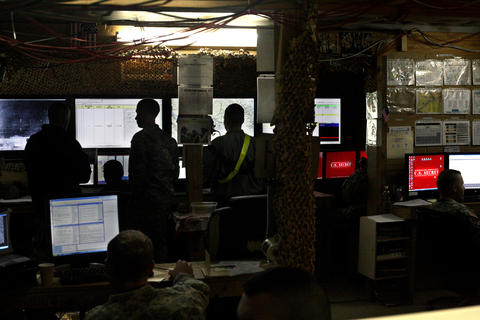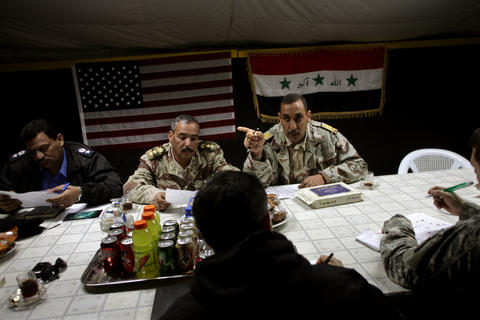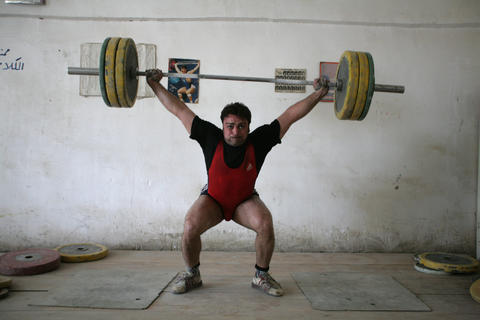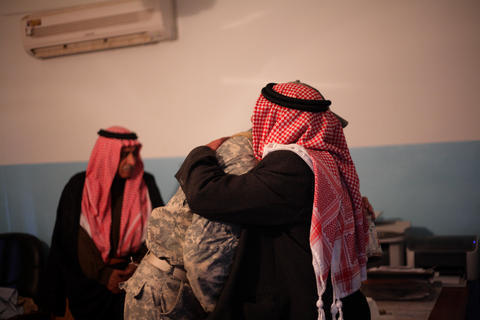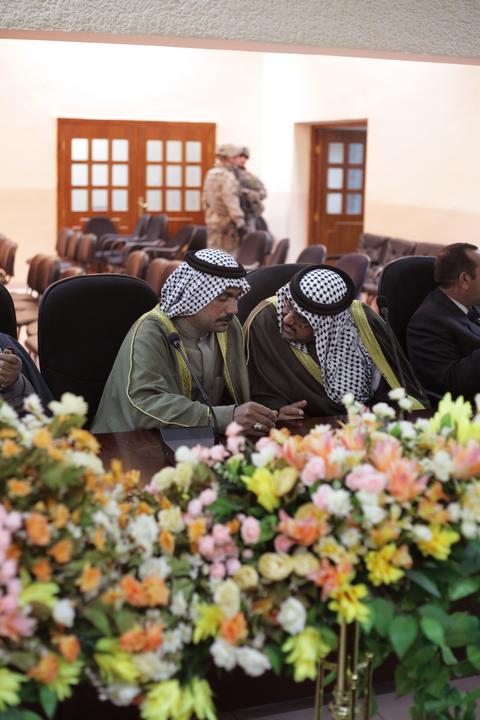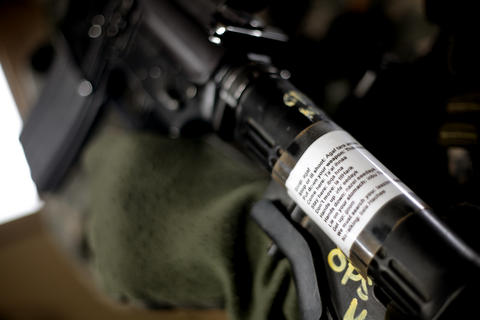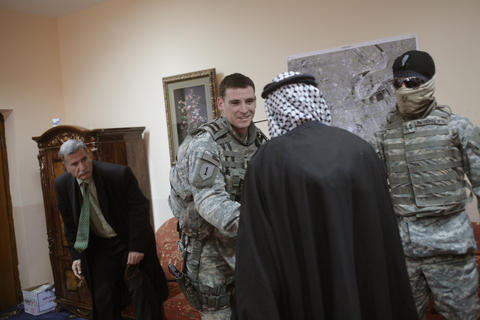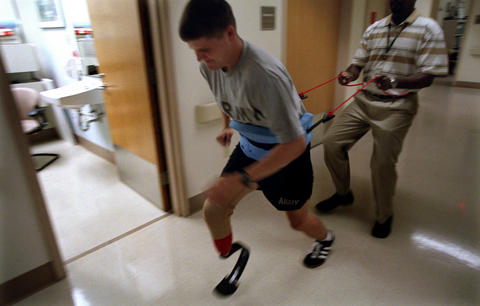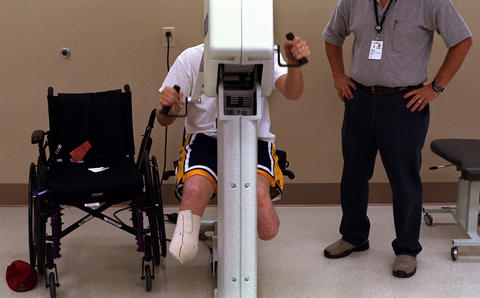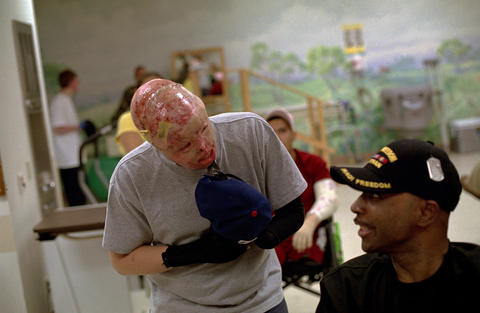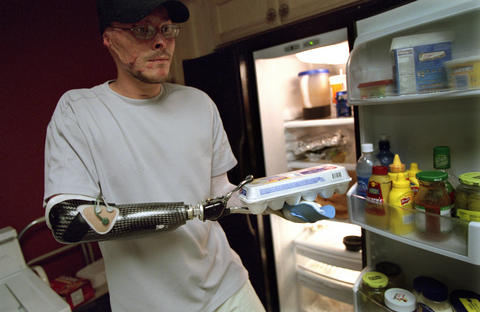Preparing for war in Iraq
Seamus Murphy
On a recent Sunday morning, I came upon an army recruitment tent in a park in East Los Angeles. A group of young people aged ten and upwards were demonstrating their skills with a computer game that has been developed by the US military and is being used in the battle for recruitment. Having spent the previous month embedded with US forces on the ground in Iraq, the scene in the park struck me as surreal, yet incredibly familiar.
A huge proportion of the operation of modern war – at least for the military of developed countries – is undertaken using modern technology, often in front of a screen and connected via the Internet. Even the primitive but lethal explosive devices used by insurgents employ mobile phones as detonators.
There are millions of young people out there who are highly skilled and almost addicted to games that are often violent and centred around conflict. In an interview in May 2005, Major Chris Chambers, Deputy Director of the Army Game Project and one of the directors for the America’s Army video game said: ‘What this means is that we make connections with Americans who might not have had a connection with the Army. We use the video game to make that connection. We’ve got 5.3 million registered users, we’ve got a ton of events that we sponsor via a grass roots marketing campaign… We normally sponsor events around the country to make one-on-one connections with mostly young people and that’s been hugely successful.’
So whether it’s a soldier plotting a course across a hostile neighbourhood in Baghdad in a Humvee in real life or a kid in East LA playing a game of a similar activity, the connection is made. The line was blurred long ago, and all that’s needed is a stirring mission to retrieve a comrade or to foil an insurgent plot hell-bent on attacking democracy. Playing the game instantly bestows honour upon the players, with the possibility of new recruits for the American forces in Iraq.


